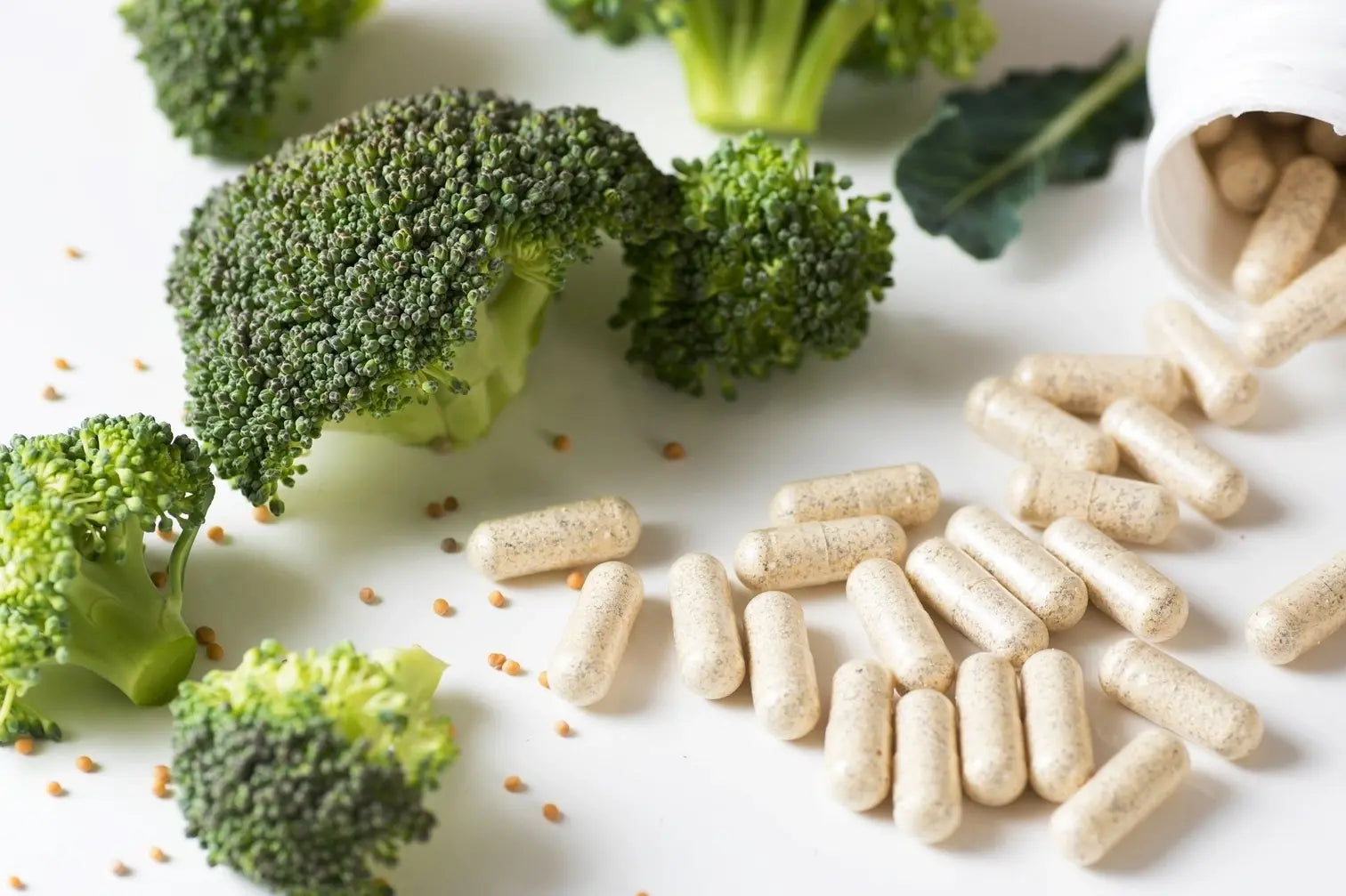What are the effects of eating sulforaphane?
What are the effects of eating sulforaphane?
Are there any side effects of sulforaphane?
Are there any side effects of sulforaphane?
What food has the most sulforaphane?
- Arugula
- Bok Choy
- Broccoli
- Brussel Sprouts
- Cabbage
- Cauliflower
- Collard Greens
- Horseradish
- Kale
- Radishes
- Rutabaga
- Turnips
- Watercress
- Wasabi
What food has the most sulforaphane?
- Arugula
- Bok Choy
- Broccoli
- Brussel Sprouts
- Cabbage
- Cauliflower
- Collard Greens
- Horseradish
- Kale
- Radishes
- Rutabaga
- Turnips
- Watercress
- Wasabi
Preparing sulforaphane-rich foods
Preparing sulforaphane-rich foods
What makes sulforaphane a powerful supplement?
What makes sulforaphane a powerful supplement?
Is oral or topical sulforaphane better?
Is oral or topical sulforaphane better?
Sulforaphane and Benefits for Your Skin
Sulforaphane and Benefits for Your Skin
- Sulforaphane is a naturally occurring chemical in many cruciferous vegetables that holds many potential health benefits due to its antioxidant, chemoprotective, anti-inflammatory, and anti-diabetic properties.
- While there is nothing wrong with cooking cruciferous veggies, the best way to absorb the sulforaphane would be to eat them raw.
- Sulforaphane can aid in UV damage repair in the skin, and has anti-inflammatory properties
- Sulforaphane is a naturally occurring chemical in many cruciferous vegetables that holds many potential health benefits due to its antioxidant, chemoprotective, anti-inflammatory, and anti-diabetic properties.
- While there is nothing wrong with cooking cruciferous veggies, the best way to absorb the sulforaphane would be to eat them raw.
- Sulforaphane can aid in UV damage repair in the skin, and has anti-inflammatory properties



